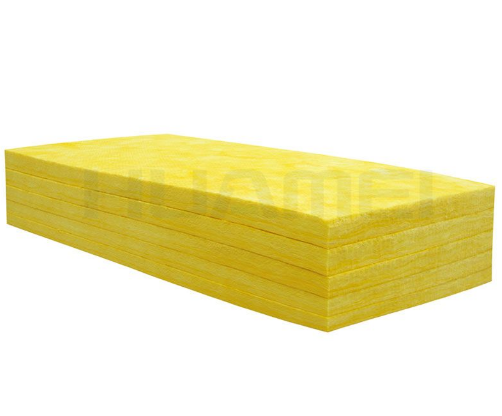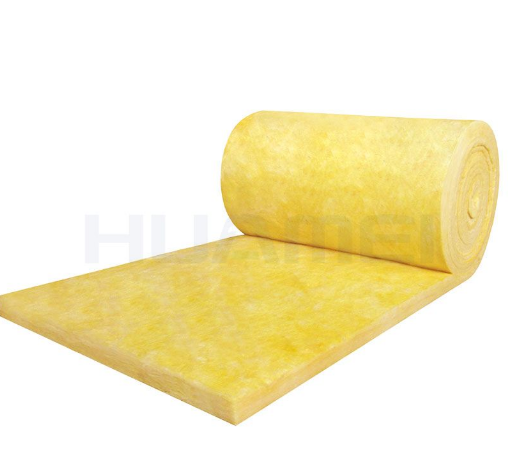Glass wool belongs to one category of glass fiber, it is a kind of artificial inorganic fiber. Glass wool is the molten glass fibrosis, forming cotton material, chemical composition of glass, is a kind of inorganic fiber, has good shape, small volume density, thermal conductivity, thermal insulation, sound-absorbing performance is good, corrosion resistance, stable chemical performance.
Introduction to glass wool
Glass wool is using centrifugal glass wool blanket is Owens corning exclusive patent centrifugation technology (OC), the molten glass fibrosis and thermosetting resins is given priority to environmental protection formula of binder for processed goods, is composed of only a few microns diameter produced by glass fiber blanket of elastic body, and can choose according to the requirement of different moistureproof cover online composite. It has a large number of small air pores, so that it plays the role of heat preservation and insulation, sound absorption and noise reduction and safety protection, is the steel structure building heat preservation and heat insulation, sound absorption and noise reduction of the best material.
Glass wool belongs to one category of glass fiber, it is a kind of artificial inorganic fiber. Quartz sand, limestone, dolomite, and other natural ores are used as the main raw materials, and some soda ash, borax, and other chemical raw materials are fused into glass. In the melting state, with the help of external force blowing type jilted into flocculent fiber, fiber and fiber for three-dimensional cross, intertwined with each other, showing many small gaps. Such gaps may be regarded as pores. Therefore, glass wool can be regarded as porous material with good thermal insulation and sound absorption properties.
Architectural applications of glass wool
In the use of centrifugal glass wool in buildings, the surface often needs to be added with a certain role of sound transmission surface, such as less than 0.5mm of plastic film, metal mesh, window screening, fireproof cloth, glass cloth, etc., can basically maintain the original sound absorption characteristics. Centrifugal glass wool is one of the most commonly used materials for building sound absorption due to its excellent properties of fire protection, heat preservation and easy cutting. However, since the surface of centrifugal glass wool is not decorative, and there will be fiber spillage, so it must be made into a variety of sound absorption components for covert use. The most commonly used structure is the lowest cost of perforated paper gypsum board ceiling or made of perforated board wall filled with centrifugal glass wool, perforation rate of more than 20%, basically can fully play the performance of centrifugal glass wool sound absorption. In order to prevent the glass cotton fiber from spilling out, it is necessary to attach a layer of non-woven cloth, mulberry paper, and other acoustic fabrics behind the perforated board, or use glass cloth, plastic film to wrap glass cotton. Similar to the perforated paper gypsum board, perforated metal board (such as aluminum board), perforated wood board, perforated fiber cement board, perforated mineral wool board, etc.
Glass wool board after processing can be made into a sound absorption ceiling board or sound absorption wallboard. In general, it is common to wrap the 80-120kg/m3 glass wool board around a fireproof sound-penetrating fabric after glue curing to form a beautiful and convenient installation of sound-absorbing wallboard. The common size is 1.2m×1.2m, 1.2m×0.6m, 0.6m×0.6m, and the thickness is 2.5cm or 5cm. There is also a sound absorption ceiling board formed by directly spraying and brushing through the sound decoration material on the surface of 110Kg/m3 glass wool. Whether it is glass wool sound-absorbing wallboard or sound-absorbing condole ceiling board, it is necessary to use glass wool of high bulk density, pass certain aggrandizement processing, in order to prevent plank to be out of shape or too soft. This kind of building materials not only have good decoration but also retain the good sound absorption characteristics of centrifugal glass wool. The noise reduction coefficient of NRC can reach above 0.85 in general.
In large spaces such as gymnasiums and workshops, centrifugal glass wool is often used as the main sound-absorbing material for sound absorption and noise reduction. The sound absorber can be made into a plate, a cylinder, a cone or any other shaped body. Centrifugal glass wool is filled inside the sound absorbing body, and the surface is wrapped in a sound permeable surface layer. Due to the sound absorption body has multiple surface sound absorption, the sound absorption efficiency is very high.
In the road sound barrier, in order to prevent noise reflection, it is necessary to take sound absorption measures on the side facing the vehicle. Centrifugal glass wool is often used as the filling material and the surface layer is perforated metal plate. In order to prevent the glass wool in the outdoor water absorption and moisture, sometimes use PVC or plastic wrap.


评论
发表评论